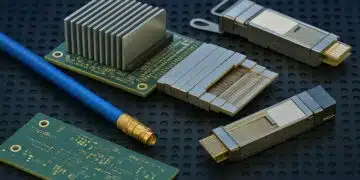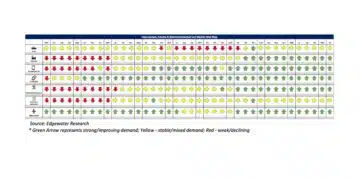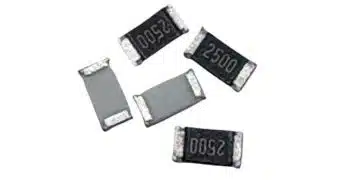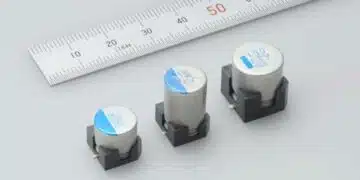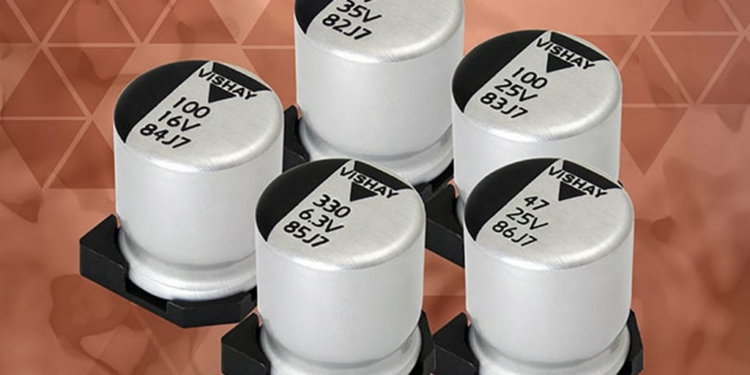Source: Vishay news
Devices Deliver Longer Useful Life, Higher Ripple Current, and Lower Impedance Than Standard Aluminum Capacitors.
MALVERN, Pa. — April 4, 2018 — Vishay Intertechnology, Inc. (NYSE: VSH) today introduced new conductive (184 CPNS, 185 CPNZ, and 186 CPNT series) and hybrid conductive (182 CPHZ and 183 CPHT series) aluminum polymer capacitors in a variety of case sizes ranging from 4 mm by 4 mm by 5.5 mm to 10 mm by 10 mm by 12.4 mm. The Vishay BCcomponents devices offer longer lifetimes than standard aluminum capacitors, while providing higher ripple current and better impedance to save PCB space and lower costs.
With useful life to 5000 hours at +105 °C, ripple current to 5600 mA, and ESR down to 9 mΩ, the conductive aluminum polymer capacitors released today are optimized for mobile devices and consumer and telecom applications. For automotive and industrial applications, the hybrid conductive devices offer a lifetime to 10 000 hours at +105 °C, ripple current to 2500 mA, and ESR down to 20 mΩ.
Available in AEC-Q200 qualified versions on request, the RoHS-compliant, surface-mount capacitors support automatic placement and high temperature reflow soldering in accordance with JEDEC.
Device Specification Table:
| Series | 182 CPHZ | 183 CPHT | 184 CPNS | 185 CPNZ | 186 CPNT |
|---|---|---|---|---|---|
| Type | Hybrid conductive | Hybrid conductive | Conductive | Conductive | Conductive |
| Rated ripple current at 100 kHz (mA) | 750 to 2500 | 500 to 2000 | 700 to 5600 | 980 to 5300 | 980 to 5100 |
| ESR at 100 kHz (mΩ) | 20 to 120 | 20 to 120 | 9 to 100 | 12 to 75 | 15 to 75 |
| Useful life (h) at max. temp | 10 000 | 4000 | 2000 | 5000 | 2000 |
| Case sizes (mm) | 5 x 5 x 5.8 to 10 x 10 x 10.5 | 5 x 5 x 5.8 to 10 x 10 x 10.5 | 4 x 4 x 5.5 to 10 x 10 x 12.4 | 6.3 x 6.3 x 5.8 to 10 x 10 x 12.4 | 6.3 x 6.3 x 5.8 to 10 x 10 x 12.4 |
| Capacitance range (µF) | 10 to 330 | 10 to 330 | 4.7 to 3300 | 10 to 1500 | 10 to 1500 |
| Tolerance (%) | ± 20 | ||||
| Voltage range (V) | 25 to 80 | 25 to 80 | 2.5 to 100 | 6.3 to 50 | 6.3 to 50 |
| Temp. range (°C) | -55 to +105 | -55 to +125 | -55 to +105 | -55 to +105 | -55 to +125 |
Samples and production quantities are available now, with lead times of 12 to 16 weeks for large orders.



